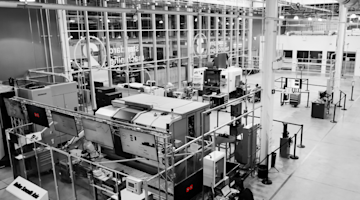On June 30, 2020, industry experts, representatives from standards development organizations, and users from across the manufacturing technology ecosystem convened for two days at the Open Industrial Digital Ecosystems Summit to discuss the headlining topic, “Enabling Vendor-neutral, Standards-based Interoperability.” This was the second consecutive year the summit was held, though it was moved online due to COVID-19 precautions. Hosted by MTConnect, and a collaboration between NIST, ISA, MTConnect, MIMOSA, and OAGI, the summit’s agenda included status reports, visions from participating SDOs and industrial users, and discussions of collaborations between different SDOs to support efficient and effective industrial digital transformation. Below is a brief look back at the two-day summit.
As the manufacturing industry undergoes digital transformation, data from factory equipment begins to accumulate at ferocious speeds. The summit laid out the business case for industrial standards when trying to bring modern IT to heavy industry and factories. The data gleaned from the equipment offers insights into production condition, speed, temperature, accuracy, and much more – if the operator knows how to read it. However, due to the wide variety of protocols used by different equipment builders, the data can quickly become a mess, particularly in larger operations. Therefore, standards are required for very large-scale systems (and systems-of-systems) to function efficiently. A single standard eliminates the need to be able to “read” different data protocols and clears up the mess of data. Then, the data may be analyzed, and best practices may be implemented to increase efficiency and improve ROI. Additionally, using standards instead of single-vendor solutions allows flexibility to swap in and out the best technology for a production process regardless of data protocols.
The summit also emphasized how to use multiple standards together. The industry speakers explained that this is necessary to complete projects in a timely manner. Speakers from standards bodies gave a progress report on how standards are being developed, and all speakers acknowledged the mounting pressure to deliver meaningful results built on standards. Among users, a tendency exists to buy a single vendor solution instead of a standard-based alternative; beware, however, as this approach may save time in the short term, but it often greatly increases costs in the long term.
Senior engineering project managers at AMT, representatives from aerospace (Lockheed Martin), oil and gas (BP), and agriculture (Land o’ Lakes) presented, making their case for smoother integration of IT systems to each other and IT systems to production systems. Representatives from several standards bodies presented, including the collaborators behind the summit: the International Society of Automation (ISA) spoke on process management data; MIMOSA discussed asset management in critical infrastructures; MTConnect explored device and process data definitions; and the Open Applications Group (OAGi) presented on business process data.
Throughout the Open Industrial Digital Ecosystem Summit, industry participants made their eagerness for standards advancements known. This plays a tremendous role in the digital transformation and the awakening of the factory floor. More machines and sensors will allow users to control every system within the production process. All speakers acknowledged the vast array of data exchange standards and protocols underpinning those systems. In order to truly “wake up” the smart factory of the future, standards must be developed to properly take advantage of these data. The ISO 18101 specification, built on the Open Industrial Interoperability Ecosystem (OIIE) specification, defines a framework for cooperation among and across standards development organizations. Hopefully, as advances are made, the technical integration of different standards will be much easier using the latest and greatest software tools, languages, and best practices.





